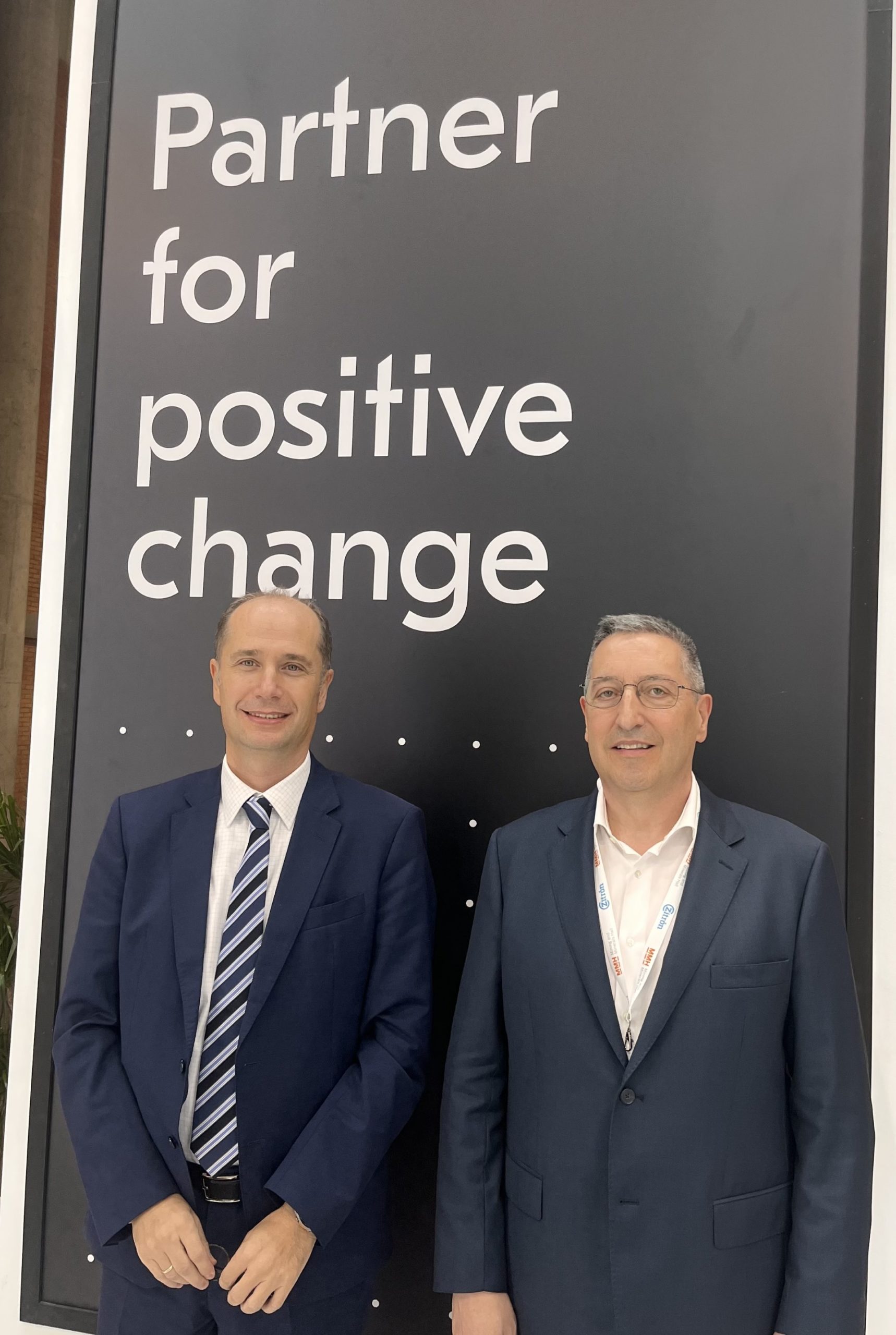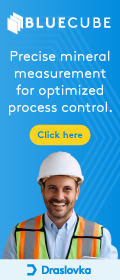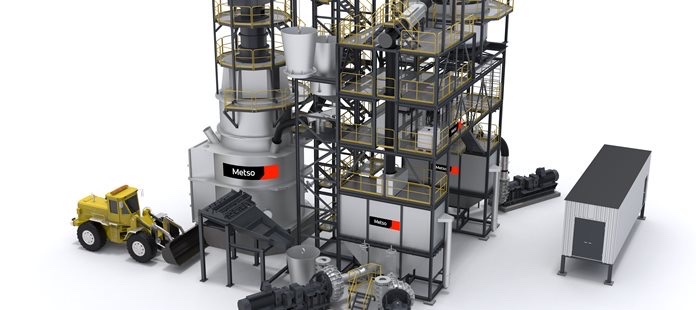At the Mining and Minerals Hall (MMH) event in Seville, Spain last October, now Europe’s largest mining specific conference and exhibition, IM Editorial Director Paul Moore sat down with Metso’s Saso Kitanoski, President Consumables and former President, Market Area Europe and Central Asia; and Miguel Santos, Senior Sales Manager, Mining & Industry, Market Area Europe and Central Asia to discuss the importance of the Iberian peninsula in a European and global context from the point of view of mineralogical diversity and mineral processing innovation with a focus on ESG.
Saso Kitanoski, Metso President Consumables and Miguel Santos, Senior Sales Manager, Mining & Industry, Market Area Europe and Central Asia

Q There is a perception that mining in much of Europe is in decline, but in certain regions such as the Iberian Peninsula there is something of a boom, especially in copper and other critical minerals – what has Metso brought to this distinctive market?
Of course, Europe is not seen today as a globally important mining hub. But if you dig deeper – Europe has really been the foundation for sustainable mining worldwide, and these approaches and strategies are being exported globally. Looking at the actual mining in Europe, the Nordic region is still very active; and in the southeastern and eastern regions mining is booming as well both through new operations but also brownfield modernisation of legacy operations. And then you have Spain and Portugal which really represent a third strong arm in European mining. Iberian mining is very diverse – reflecting a very diverse underlying geology and mineralogy. This brings its own challenges but also opportunities. The volumes involved are not the largest in the world, but a lot of innovative mineral processing advances are being made in the region that can then be applied elsewhere. Metso is present at nearly all the Iberian mines in some way, including a number of operations where we have supplied a complete solution. The orebody diversity even at one mine changes how you mine and how you process the ore. One good example is ALMINA, which has evolved from a copper operation to a polymetallic copper-zinc-lead operation and for whom we have supplied key equipment for their new copper concentrator. Another example prior to that is Somincor, where our technologies helped deliver their Zinc Expansion Project.
Q In more detail, how do Metso’s mineral processing solutions bring value to the mines in the Iberian region from a practical point of view?
These projects have to be delivered in a way that allows for process flexibility over a long mine life to allow for ore grade and mineralogy changes, so that they remain commercially viable. And this is where Metso has a unique offering – we have a portfolio of solutions that doesn’t just provide a single solution to a single problem. Instead it can provide multiple options and solutions to a single problem. Take fine grinding and regrinding such as the use of our Vertimill, HIGmill and SMD stirred mills – why is that important today? First of all it is super energy efficient – so it is sustainable and aligns with our Metso Plus approach. It also decreases the main component of wear which is the grinding media, by as much as a half. Crucially it is also flexible in terms of how fine or coarse you grind. And when your orebody changes and you are having to extract different metals and minerals over time, you need to have that flexibility. This technology provides that with far less power – 30-40% less. The Iberian region has actually been one of the first movers in applying fine grinding technology – with Vertimill technology at Somincor, plus SMDs have been installed at Minas de Aguas Tenidas (MATSA) since the very start of that project when it was part of Trafigura and we continue to work closely with current owners Sandfire. ALMINA’s original plant was using our Stirred Media Detritor (SMD) mills and they have stuck with that technology for their new concentrator as it gives them the reliability and flexibility they need. And we have recently agreed to acquire our long-term HIGmill partner Swiss Tower Mills Minerals.
Metso has been a long term partner with ALMINA in Portugal (image courtesy ALMINA)

Q Some of the operations in Iberia are located in mining districts that have been active for hundreds and in some cases thousands of years – this also means there are legacy environmental challenges plus certainly sensitivity to new mining activity – how does the Metso Plus approach play its part?
Unfortunately, we cannot right some of the wrongs from historical mining – but having said that many of our technologies have the potential to be used to reprocess historic tailings – often enabling the recovery of valuable minerals at the same time as cleaning up these areas such as through water treatment. We have invested heavily in our Metso Research Center in Pori, Finland, which is a major minerals processing testing facility where we process over 18,000 samples a year, including those from potential tailings reprocessing projects. The outcome is a flowsheet for these specific materials – and for the operator much of the mining process has already been done – it just becomes a materials handling exercise to feed the plant. For new operations looking at tailings options, we have our Dry Tailings Plant, which is a fully integrated design that comprises thickening, filtration, and dry material handling for tailings dry stacking, including all necessary ancillary equipment and systems. This plant is particularly suited to areas where water consumption is a sensitive issue, or where there are strict requirements in terms of the safe operation, tailings management, and eventual mine closure and rehabilitation. For large operations we offer the Larox FFP3716 filter which is our optimised solution for tailings filtration, and it was exclusively designed for tailings processing. As stated, today’s miners in Iberia are some of the most progressive early adopters of the latest and more sustainable mineral processing solutions and technologies in the world, which are part of our Metso Plus approach. We already talked about fine grinding – another important area related to this from a sustainability point of view, especially in Europe, is plant footprint. These new technologies and future flowsheets can result in a plant footprint that is only 10% of a conventional process plant – this is very significant where you have high population density and often a lot of permitting issues.
Q To summarise – your customers in Iberia may not be the largest throughput wise in mining, but it is a diverse mining market with metals, critical minerals like lithium and tungsten as well as industrial minerals, plus the customers are some of the most ESG focused and therefore the most open to using the latest mineral processing innovations?
Certainly, the region has one of the most diverse mineralised belts for its size in the world which makes it an exciting mining district. From an ESG point of view, the social licence to operate is crucially important in Iberia and in the rest of Europe – and that really drives a focus on energy and water conservation as well as minimal operational footprints. There is also slowly but surely a greater social acceptance of mining in Europe – particularly when it comes to the strategic importance of critical minerals and the current and future requirements for those materials to enable a more decarbonised world. The social acceptance also provides underlying confidence and stability for those looking to make long term mining investments. At Metso we have the proven solutions to meet customer needs and priorities in Iberia and Europe, which includes mining but also recycling – for example recovering high-value battery raw materials through advanced black mass recycling processes.











